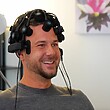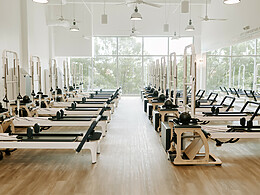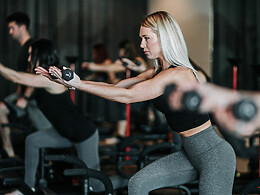After ending my competitive pom years, I immediately gravitated towards cardio in order to stay in shape. I knew the basics, like getting your heart rate up and burning calories, but what really are the benefits of cardio? Don’t worry Lindsey Doedens, Fitness Director with Mountainside Fitness and Core Concepts is here to answer all of your cardio questions. Take it away Lindsey!
Q: What is the best fatburning type of cardio?
A: While low intensity aerobic exercise burns the highest ratio of fat calories to carbohydrate or protein calories, the overall amount burned is pretty low because the demand placed on your heart and lungs is not very challenging. An example of low intensity cardio would be walking. Most people don’t get an increased heart rate or respiratory rate just walking.
Moderate to high intensity cardio will burn a greater total number of calories, and at a faster rate, allowing you to net an overall higher number of fat calories than low intensity cardio alone. Moderate to high intensity examples would be interval jogging/running, cycling, rowing, swimming and High Intensity Interval Training, or HIIT.
Q: So how do you know what is considered low, moderate, or high intensity for you?
A: We determine target training zones by taking a percentage of your Maximum Heart Rate (MHR). First find your MHR by subtracting your age from 220. Most people who are not highly conditioned athletes should not exercise for any sustained period of time at a heart rate above this number. Low intensity cardio would be around 55% of your MHR while moderate intensity would be 65-70% of your MHR and high intensity would be between 70-80% of your MHR. Now take your MHR and multiply it by the percentages listed above to find your own low, moderate, and high intensity training zones.
Q: How can you switch up your cardio routine so it stays fresh?
A: Your body adapts to the stresses you place on it so when you feel like you need a change you probably do. Cross training is a great way to keep the body guessing and the mind engaged. When the same pace is maintained throughout an aerobic exercise regimen like using and elliptical or jogging it can place the body into a steady state where the body will adapt and try to conserve calories rather than burn them. If you have access to a pool, bike, or rowing machine, try to utilize these other cardio types to keep things fresh. If you don’t have access to other forms of cardio just changing up the intensity is a good way to avoid this. Interval training can be as easy as running at a very fast pace for a minute or two and then slowing to a fast walk for a minute or two of recovery and repeating a handful of times. This varied intensity will avoid the steady state problem. Don’t want to watch a clock? Try programming the music you run with to alternate a fast song with a slow song and then just run to the beats!
Q: What tip would you give to people that only do cardio?
A: Add resistance training, plain and simple. The benefits of resistance training are so monumental they cannot be ignored if you are trying to change your body composition at all. Toning, dropping body fat, getting lean, getting strong, increasing bone density, and increasing metabolism all are results of resistance training.
We also lose muscle as we age, which is why the tone of a 20 year old’s legs will look very different from the tone of a 70 year old’s legs. They may have the same circumference but the tone that muscle gives us in our youth starts to disappear if you don’t actively try and maintain it with resistance training.
Q: How long should you do cardio during your workout?
A: Cardio, or Aerobic activities, are any form of exercise that is repetitive, long, and challenging enough to place a demand on the heart and lungs to use oxygen as a fuel source to sustain the body over a longer period of time. 15 – 20 minutes or longer is usually recommended for beginners and 45- 60 minutes or longer for a more experienced exerciser.
If you also do resistance training, which I highly recommend for dropping body fat, you should always do your resistance training first and your cardio after. You will get much more out of both parts of your workout if you do them in that order.
For more info on Mountainside Fitness and Core Concepts check out http://www.mountainsidefitness.com/











